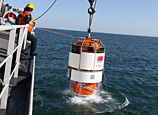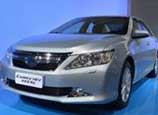
The Yangtze River Delta still dominates the list, having 31 cities selected, while the Pearl River Delta has 11 cities on the list.
Jiangsu province has the largest number of cities in the rankings, with 18, followed by Shandong province with 13 and Zhejiang province with 12.
According to a Forbes survey, Suzhou was the most innovative city, overtaking Shenzhen for the first time, because of a significant increase in the number of patent applications and licenses there.
Western cities such as Lanzhou, capital city of Gansu province, and Urumqi, capital city of the Xinjiang Uygur autonomous region, made their debuts on the list. However, their levels of consumption and innovation were far lower compared with cities in central regions, the report said.
"China's overall urbanization level is still low compared with that of the United States and Japan, so the potential is still huge," said Zhou Qiren, a professor at Peking University.
However, he said, the role of government in advancing urbanization should be weakened, as this has led to the misallocation of resources, as in the case of projects that are not in line with population movements.
Zhou also said China should reconsider its urban development strategy, which mainly concentrates on developing smaller cities, and shift to developing larger cities.















 Snow hits capital of China, flights delayed
Snow hits capital of China, flights delayed


![]()
